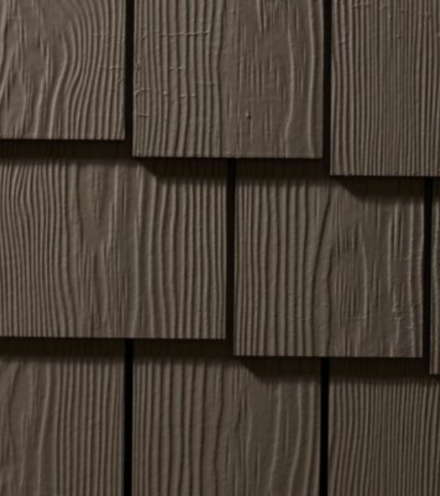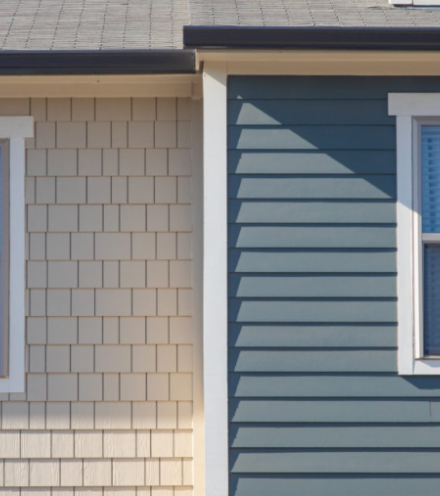Traditional siding vs Dutch lap – it’s one of the biggest questions homeowners ask themselves when selecting exterior siding for their house. In many cases, the distinction may not be clear. After all, comparing Dutch lap and traditional siding can be confusing, since the difference is quite subtle – and mostly comes down to a stylistic preference.
With that said, it’s important to understand that other factors – like material selection and installation – can impact the quality and performance of exterior house siding. Along with the overall style and visual appearance of the exterior, these are also important things to consider when debating between Dutch lap siding and traditional siding.
Let’s compare traditional siding and Dutchlap siding and explore what qualities to look for when designing a beautiful, long-lasting exterior for your home.
Visual Appearance: Dutch Lap vs. Traditional Siding
When identifying siding, there are a few things to look for – though you’ll need to look closely and carefully since Dutch lap and traditional siding actually have a lot in common. Both siding styles feature long, narrow planks. Installed horizontally throughout the exterior, both Dutch lap and traditional siding have a classic, measured appearance. The planks are installed in a particular way so that the bottom edge overlaps the top edge of the plank below it, which results in a slight lip.

Originally intended as a practical design feature – the overhang provides better coverage than planks that are installed flush with each other – the overhanging arrangement of lap siding quickly took on another important role: style. From a distance, the lip creates noticeable horizontal lines that add texture to the overall appearance of the home. Both Dutch lap and traditional siding (sometimes referred to as clapboard) have a textured effect.
However, the extent of the shadow line is more emphasized with Dutch lap because of a key distinguishing feature in its design. When comparing traditional and Dutch lap siding, you’ll notice that Dutchlap has a slight concave face that curves out into the notched overlap – unlike traditional lap siding planks which are flat. It’s a minor design alteration, but it does lead to a noticeable difference in the appearance of Dutch lap siding.

Aesthetics are always important when creating curb appeal, but the distinction between Dutch lap and traditional is pretty much left to style preferences. If you prefer a more dramatic shadow line, then you’ll probably like the look of Dutchlap. However, if you prefer a subtle shadow line with a flatter appearance, traditional lap or clapboard will most likely be the better choice for your home. Again, it comes down to personal preference so there’s no right or wrong answer!
Installation: Dutch Lap vs. Traditional Siding
When Dutchlap really gained momentum in the 1880s, siding panels were still being carved from raw timber. As you can imagine, the workload was pretty intense when it came to installation. Since traditional siding only required flat panels and Dutchlap required curved panels with a pronounced lip, it’s safe to say that traditional siding was typically faster and easier to install than Dutchlap.
However, times have changed! Now, most lap siding – including both Dutch lap and traditional clapboard panels – are super easy to install. Planks are pre-cut and often feature grooves and clip-in features that help guide installation. This is especially common for vinyl, fiber cement, and metal siding products. Securing modern lap siding panels is simple and straightforward, so there’s not much difference between Dutch lap and traditional siding when it comes to the installation process. Wood lap, on the other hand, will still require more skill and effort to install correctly.
Materials: Comparing Dutch Lap vs. Traditional Vinyl Siding
Traditional lap and Dutchlap will both last longer if modern materials are used. Wood tends to experience more wear and tear from everyday exposure to the elements – which can destroy the appearance of Dutch lap and traditional lap siding in a flash. Though wood is prized for its natural grain, it requires a significant amount of upkeep to protect its original allure. Staining, sanding, repair, and panel replacement are common tasks needed to keep traditional siding in peak shape.
Vinyl is considered easier to install – for both Dutch lap and traditional lap – and tends to be more weather resistant than wood. However, it can still accrue damage from consistent moisture and sun exposure, which leads to color fading and a dull appearance. It can also swell or buckle from changes in temperature, which can lead to gaps where the panels meet. This can expose the structure to additional moisture, which can lead to mold and mildew growth.
Homeowners who want both performance and an attractive appearance tend to go with fiber cement siding. Designed to be incredibly durable and long-lasting, fiber cement products are a great solution for homeowners who want easy installation, durability, affordability, and a superior appearance.
Whether you prefer the look of Dutch lap or traditional clapboard, a fiber cement composition is key to getting long-term performance out of your exterior.
Contact Allura today to explore a variety of beautiful lap siding products crafted for long-term durability.




